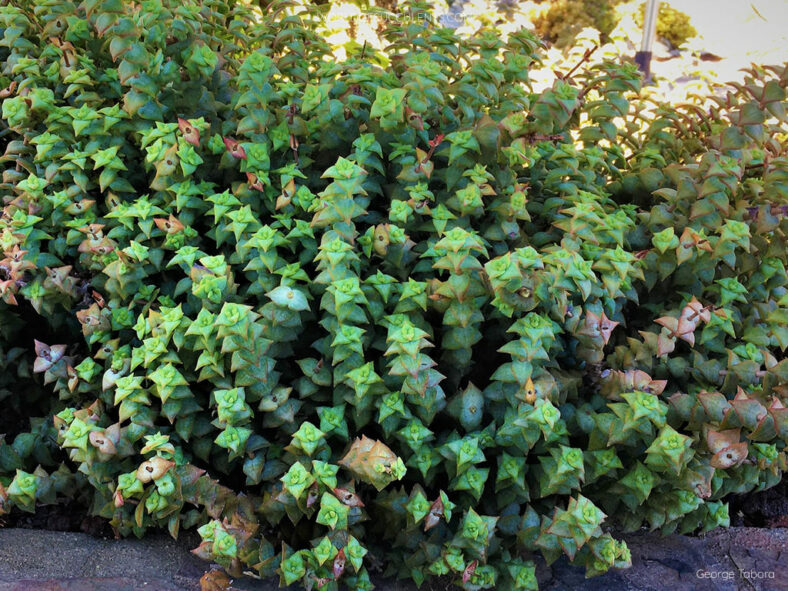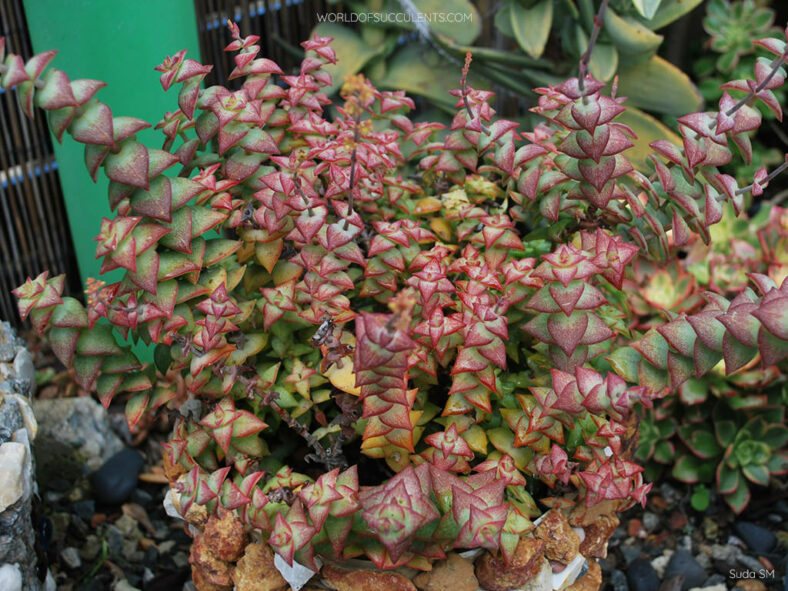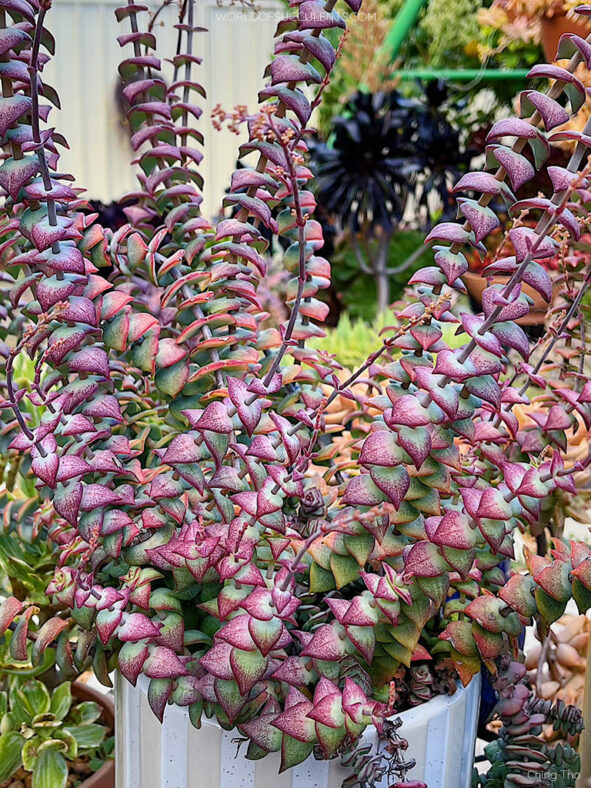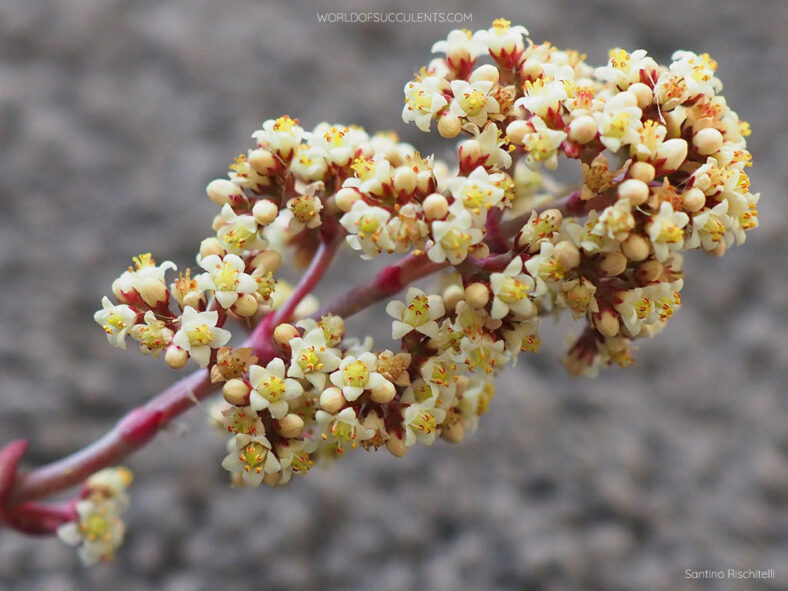Crassula perforata is a highly variable species, with leaves that range from oval to lance-shaped. The leaves have distinctively colored horny margins and may or may not have marginal cilia.
Scientific Name
Crassula perforata Thunb.
Common Name(s)
Necklace Vine, Pagoda Plant, Stacked Crassula, String of Buttons
Synonym(s)
Crassula perforata subsp. perforata
Scientific Classification
Family: Crassulaceae
Subfamily: Crassuloideae
Genus: Crassula
Etymology
The specific epithet "perforata" (pronounced "per-for-AY-tuh") means "pierced; penetrated" and refers to the perforated appearance of the leaves of this species.
Origin
Crassula perforata is native to South Africa. It grows in dry scrub, often in rock crevices or among boulders, in the Eastern Cape and KwaZulu-Natal provinces.
Description
Crassula perforata is a spreading, somewhat scrambling succulent shrub with slender, grey-brown stems and grey-green leaves with reddish margins. It can grow up to 3.3 feet (1 m) tall. Initially, the stems are fleshy and upright, but they become woody and prostrate over time. The leaves are thick, succulent, abruptly constricted at the base, and fused with the opposite leaf. They can measure up to 1.3 inches (3.3 cm) in length and 0.8 inches (2 cm) in width, but are much smaller in the typical form.
From spring to fall, Crassula perforata produces flowers with triangular brown to red sepals and a tubular corolla with cream-colored to pale yellow petals. The flowers appear in elongate, rarely short, rounded clusters that can reach up to 3.2 inches (8 cm) in length. A usually indistinct stalk supports the flower clusters due to a gradual change from leaves to bracts.

How to Grow and Care for Crassula perforata
Light: Crassula perforata prefers full sun to partial shade. However, avoid intense afternoon sun during the hot summer days, as it can burn the leaves. If growing the plant indoors, place it in a window with at least 6 hours of direct sunlight.
Soil: This plant is not particular about soil pH but requires very porous soil with excellent drainage. You can use a commercial soil mix for succulents or create your own.
Temperature: Although this succulent can tolerate average summer temperatures and short-term freezing, exposure to extreme cold or heat can cause it to lose leaves and even die. Crassula perforata grows best in USDA Plant Hardiness Zones 9a to 11b, with average minimum winter temperatures ranging from 20°F to 50°F (-6.7°C to 10°C).
Watering: Avoid overwatering using the "soak and dry" method to keep the plant healthy. Water deeply, then allow the soil to dry out completely before watering again. Reduce watering in winter. The potted plants require more frequent watering than those in the ground.
Fertilizing: While Crassula perforata does not require high levels of nutrients, it will benefit from a small amount of organic fertilizer in mid-spring, when it starts actively growing.
Repotting: Repot the plant as needed, preferably in spring, at the beginning of the growing season. Ensure the soil is dry before beginning the repotting process.
Propagation: This plant is usually propagated by leaves and stem cuttings. The easiest method is to use leaves, but stem cuttings produce larger plants more quickly. It can also be grown from seeds. The best time to propagate by cuttings is at the beginning of the growing season, while spring and summer are ideal for sowing the seeds.
Learn more at How to Grow and Care for Crassula.
Toxicity of Crassula perforata
Crassula perforata is considered non-toxic and is safe for growing around children and pets.
Subspecies, Forms, and Cultivars of Crassula perforata
- Crassula perforata subsp. kougaensis
- Crassula perforata 'Giant Form'
- Crassula perforata f. variegata
Links
- Back to genus Crassula
- Succupedia: Browse succulents by Scientific Name, Common Name, Genus, Family, USDA Hardiness Zone, Origin, or cacti by Genus
Photo Gallery
Click on a photo to see a larger version.


